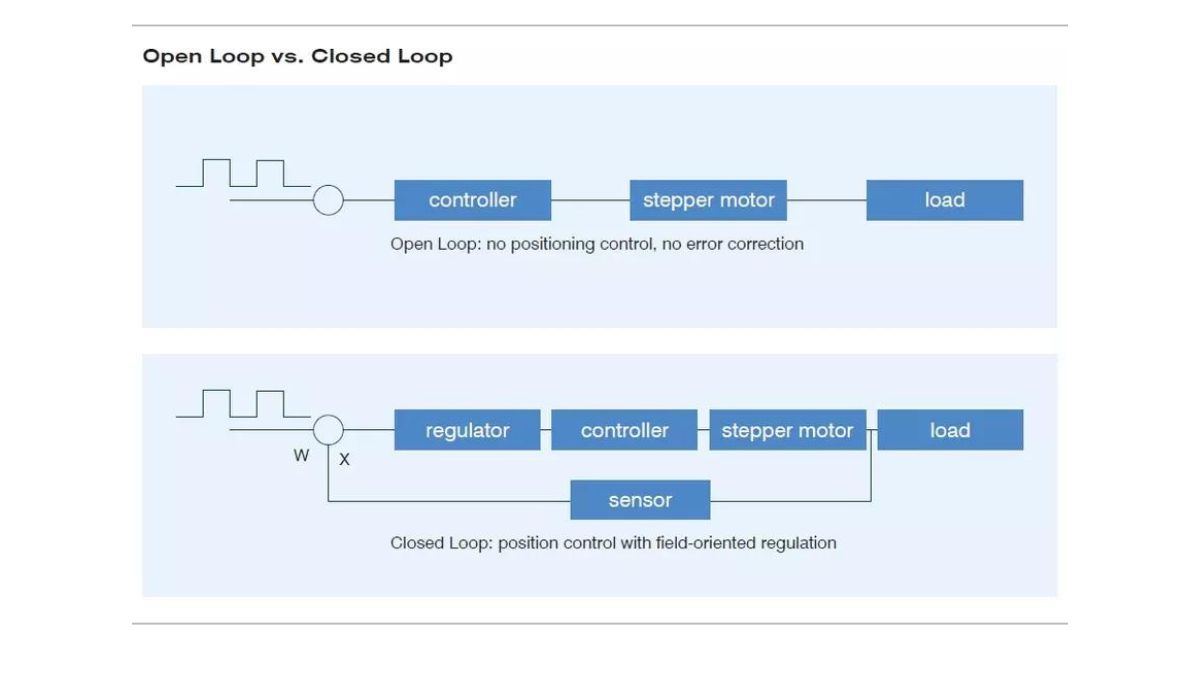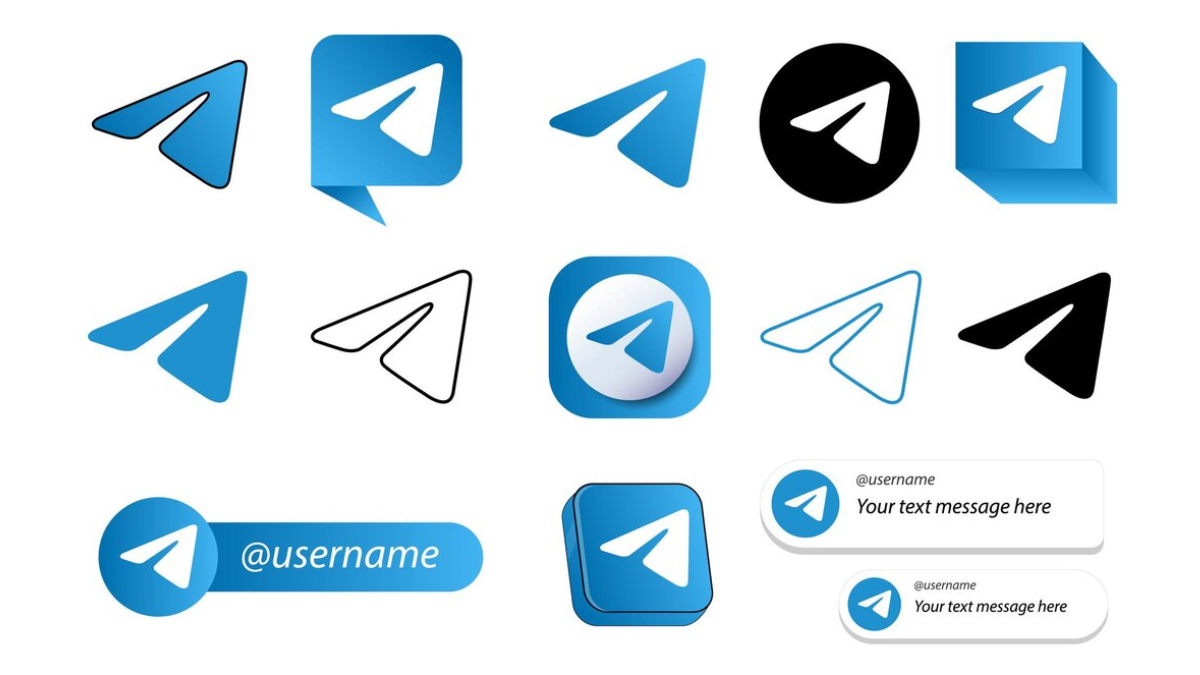Technology
What is open loop vs closed loop ?

Open loop versus closed loop systems – it may sound like a battle of the loops, but in reality, it’s an intriguing concept that affects our everyday lives more than we realize. Whether you’re aware of it or not, these two types of systems play a significant role in various aspects of technology and engineering. So, if you’ve ever wondered what exactly open loop vs closed loop mean, how they differ from each other, and which one is right for your needs, this blog post is here to shed some light on the subject.
From simple household appliances to complex industrial machinery, understanding the difference between open loop vs closed loop systems can help you make informed decisions when it comes to optimizing performance and functionality. In this article, we’ll delve into real-world examples, advantages and disadvantages of each system type, as well as explore their potential applications in different industries. So buckle up as we embark on a journey through the fascinating world of open loop versus closed-loop systems!
Understanding the concept of open loop vs closed loop systems
Open loop vs closed loop systems are two fundamental concepts in the realm of technology and engineering. At their core, these systems refer to the way information is processed and feedback is utilized.
In an open loop system, there is no mechanism for receiving feedback or correction. It operates based on predetermined inputs without considering the output or making any adjustments along the way. Think of a simple toaster – you set it to a specific time, and it heats up accordingly, regardless of whether your toast is perfectly golden brown or slightly burnt.
On the other hand, closed loop systems are designed to take into account feedback from sensors or measurements to continuously adjust and optimize performance. An excellent example would be a thermostat regulating room temperature. It senses the current temperature, compares it to your desired setting, and adjusts heating or cooling accordingly until both match.
The key distinction between open loop and closed-loop systems lies in their ability to adapt and self-correct based on real-time information. While open loops provide simplicity and efficiency for tasks where accuracy isn’t crucial (like turning on lights), closed-loop systems offer precision control in situations that require constant monitoring (such as autonomous vehicles).
Understanding these concepts can help us better appreciate how our world functions with various levels of automation. Whether we realize it or not, our daily lives are surrounded by examples of both open loop mechanisms simplifying routine tasks while closed loops ensure more precise outcomes.
Now that we have familiarized ourselves with what defines open loop versus closed-loop systems let’s explore some practical examples that illustrate how they operate in different scenarios!
Examples of open loop vs closed loop systems
Open loop vs closed loop systems are used in a wide range of applications, from everyday household appliances to complex industrial processes. Let’s take a look at some examples to understand how these systems work in different scenarios.
In the realm of home appliances, an example of an open loop system is your toaster. You set the desired level of toastiness, but there is no feedback mechanism to adjust the cooking time based on the actual temperature inside the toaster. It simply runs for a predetermined amount of time before popping up your toast.
On the other hand, consider a thermostat-controlled heating system as an example of a closed loop system. The thermostat senses the current temperature and compares it to the desired temperature you have set. Based on this feedback, it adjusts the heating output accordingly until reaching the target temperature.
Moving beyond household examples, let’s explore closed-loop control in automotive applications. Electronic fuel injection systems use sensors to measure various parameters such as engine speed, throttle position, and oxygen levels in exhaust gases. This information is continuously fed back into an engine control unit (ECU) which then adjusts fuel delivery accordingly for optimal performance.
Another real-world application can be found in manufacturing processes where precision is crucial. CNC machines that fabricate intricate parts rely on closed-loop systems to ensure accuracy during cutting or milling operations. Sensors monitor variables like tool position and material dimensions while feeding data back into controllers that make precise adjustments as needed.
These examples highlight how open loop vs closed loop systems operate differently depending on their specific requirements and objectives. While open loops may be simpler and more cost-effective for certain tasks with predictable outcomes (like operating simple appliances), closed loops offer greater precision by incorporating feedback mechanisms tailored for more complex operations where accuracy matters most.
As technology continues advancing, we can expect further integration between open loop and closed-loop concepts – creating hybrid systems that combine aspects from both approaches to optimize performance across various domains.
Advantages and disadvantages of each system
Open loop systems offer several advantages. One major advantage is their simplicity. Since they do not rely on feedback, open loop systems tend to be less complex and easier to design and implement. This also means that they are generally more affordable.
Another advantage of open loop systems is their high speed and quick response time. Without the need for constant feedback, these systems can operate at a faster pace, making them ideal for applications where speed is crucial.
However, open loop systems have some drawbacks as well. One major disadvantage is their lack of accuracy and precision. Without any feedback mechanism to correct errors or adjust performance, open loop systems may be prone to inaccuracies over time.
Closed loop systems, on the other hand, offer greater accuracy and precision due to their reliance on feedback mechanisms. This allows for continuous monitoring and adjustment based on real-time data.
One disadvantage of closed loop systems is their complexity compared to open loop systems. With the added components required for feedback control, closed-loop designs can be more intricate and potentially more expensive.
Both open loop and closed-loop systems have their own set of advantages and disadvantages depending on the specific application requirements
Real world applications of open loop vs closed loop systems
Open loop vs closed loop systems have various real-world applications across different industries. Let’s explore some examples to understand how these systems are used in practical scenarios.
One common application of an open loop system is in traffic control systems. Traffic lights operate on a predetermined timing pattern, regardless of the actual traffic conditions. This means that the system does not respond to changes in traffic flow, making it an open loop system.
On the other hand, closed loop systems can be found in temperature control systems such as air conditioners and refrigerators. These devices monitor the current temperature using sensors and adjust their operation accordingly to maintain a desired temperature level.
Another example of a closed loop system is cruise control in vehicles. The system monitors the vehicle speed through sensors and adjusts throttle input to maintain a constant speed set by the driver.
In industrial manufacturing processes, both open loop and closed-loop systems are utilized. Open-loop systems are often used for simple tasks like controlling conveyor belts or robotic arms with predefined movements. Meanwhile, closed-loop feedback control is essential for maintaining precise measurement and regulation during complex manufacturing operations such as chemical processing or precision machining.
These are just a few instances where open loop and closed-loop systems find practical applications. Their usage extends across diverse fields including aerospace engineering, healthcare equipment, power generation plants, robotics, home automation systems, among others.
By understanding these real-world applications, we can see how versatile open loop and closed-loop systems truly are – each fulfilling specific needs based on their advantages over one another.
How to determine which system is best for your needs
When it comes to determining which system is best for your needs, there are a few factors you should consider. First and foremost, think about the specific task or goal you are trying to achieve. Are you looking for a system that provides precise control and feedback? Or do you prefer a more cost-effective and simple solution?
Next, evaluate the environment in which the system will be used. Is it a controlled and predictable setting? Or does it involve unpredictable variables that can impact performance? Understanding the conditions in which the system will operate is crucial in making an informed decision.
Additionally, consider your budget and resources. Open loop systems tend to be less expensive and easier to implement since they don’t require as much feedback or monitoring. However, closed loop systems offer greater accuracy and reliability at a higher cost.
Consult with experts or professionals who have experience with similar applications. They can provide valuable insights based on their knowledge and expertise.
By carefully considering these factors, you can determine whether an open loop or closed loop system is best suited for your specific needs. Remember that there isn’t one-size-fits-all solution – what works for one situation may not be ideal for another!
The future of open loop and closed loop technology
The future of open loop vs closed loop technology holds immense potential for various industries and applications. As technology continues to advance at an unprecedented pace, these systems are expected to play a crucial role in shaping our world.
In the field of transportation, open loop systems are likely to revolutionize autonomous vehicles. By utilizing real-time data from sensors and cameras, these vehicles can navigate through traffic and make split-second decisions with precision. This promises enhanced safety on the roads and increased efficiency in commuting.
Closed loop systems, on the other hand, are anticipated to transform healthcare. With advancements in wearable devices and biosensors, individuals can monitor their health conditions continuously. These devices can measure vital signs such as heart rate, blood pressure, glucose levels, and more. The collected data can then be analyzed by closed loop systems to provide personalized feedback or even trigger automated responses in emergency situations.
Moreover, both open loop and closed-loop technologies have tremendous potential in energy management. Open-loop systems could optimize renewable energy generation by adjusting outputs based on weather conditions or demand fluctuations. Closed-loop systems could improve energy efficiency within buildings by automating lighting controls or HVAC systems based on occupancy patterns or ambient temperature changes.
As we look ahead into the future of these technologies, it is clear that they will continue to evolve rapidly with ongoing innovations. Advancements in artificial intelligence (AI) algorithms will further enhance decision-making capabilities for both open loop and closed-loop systems.
In conclusion (Not conclusive), the future of open loop vs closed-loop technology is excitingly promising across various sectors including transportation, healthcare, energy management – just scratching the surface! With continuous research & development efforts fueling technological breakthroughs every day(Not summarized), it’s fascinating to imagine how far these versatile frameworks will take us as we embrace a smarter connected world!
Conclusion
In this blog post, we have explored the concepts of open loop vs closed loop systems, their examples, advantages and disadvantages, real-world applications, and how to determine which system is best for your needs.
Open loop systems are simple and cost-effective solutions that can be found in everyday appliances like washing machines or coffee makers. They operate based on predetermined inputs without any feedback mechanism. On the other hand, closed loop systems offer more precise control by continuously monitoring the output and adjusting accordingly.
Both open loop vs closed loop systems have their strengths and weaknesses. Open loop systems are less complex but lack accuracy and adaptability while closed-loop systems provide greater precision but can be more costly to implement.
Real-world applications of these systems are vast. From automotive industry where open-loop fuel injection is used to deliver a fixed amount of fuel into an engine to closed-loop cruise control that adjusts speed based on sensor inputs; from home automation where thermostats maintain desired temperatures using a combination of open-loop (setting desired temperature) and closed-loop (measuring actual temperature) controls to space exploration missions relying on both types of systems for navigation or life support.
When it comes to choosing between open loop vs closed loop system for your specific needs, consider factors such as precision requirements, complexity constraints, cost considerations, reliability expectations, as well as ease of implementation.
As technology continues to advance at an unprecedented pace, we can expect further developments in both open loop and closed-loop technologies. The integration of artificial intelligence algorithms with these systems holds great potential for enhancing performance even further.
Technology
Take Charge: 10 Proven Strategies for Discord Gain Control

In the realm of online communities, maintaining harmony and control can be a daunting task. Discord, a popular platform for communication and collaboration, often presents challenges in managing conflicts and maintaining order. However, with the right strategies and approaches, gaining control over discord is not only achievable but can also lead to a thriving and vibrant community. In this comprehensive guide, we’ll delve into 10 proven strategies to help you take charge and foster a positive environment within your discord community.
Establish Clear Guidelines and Rules
Setting clear guidelines and rules is essential for creating a structured environment within your discord community. By clearly outlining expectations regarding behavior, language, and interactions, you provide members with a framework for appropriate conduct. Additionally, ensure that these guidelines are easily accessible and prominently displayed to all members.
Foster Open Communication Channels
Encourage open communication channels where members feel comfortable expressing their thoughts, concerns, and ideas. By fostering an environment of transparency and openness, you promote constructive dialogue and minimize the likelihood of conflicts escalating.
Lead by Example
As a leader within the community, it’s crucial to lead by example and demonstrate the behavior you wish to see in others. Uphold the values and principles outlined in your guidelines, and actively engage with members in a respectful and positive manner.
Implement Moderation Strategies
Effective moderation is key to maintaining control and order within your discord community. Establish a team of moderators who are tasked with enforcing the rules, addressing conflicts, and ensuring that discussions remain productive and respectful.
Encourage Collaboration and Teamwork
Promote collaboration and teamwork among members by creating opportunities for joint projects, discussions, and events. By fostering a sense of camaraderie and shared purpose, you can strengthen bonds within the community and reduce the likelihood of discord.
Provide Support and Resources
Offer support and resources to members who may be struggling with conflicts or challenges within the community. Whether it’s providing guidance on conflict resolution or offering access to counseling services, demonstrating empathy and support can help mitigate discord.
Address Issues Promptly
Address issues and conflicts promptly to prevent them from escalating further. Take proactive measures to resolve disputes, mediate conflicts, and ensure that all parties involved feel heard and understood.
Cultivate a Positive Culture
Cultivate a positive culture within your discord community by celebrating achievements, recognizing contributions, and fostering a sense of belonging. Encourage positivity, optimism, and mutual respect among members.
Conduct Regular Check-ins
Conduct regular check-ins with members to solicit feedback, assess the overall health of the community, and identify any emerging issues or concerns. Use these check-ins as an opportunity to reinforce the values and principles of the community and address any areas of improvement.
Continuously Evolve and Adapt
Finally, recognize that maintaining control over discord is an ongoing process that requires continuous evolution and adaptation. Stay vigilant to changes within the community, solicit feedback from members, and be willing to adjust your strategies as needed to ensure the long-term success and sustainability of your discord community.
Discord Gain Control
Achieving control over discord within your community requires a proactive and multifaceted approach. By implementing the strategies outlined above, you can create a positive and harmonious environment where members feel valued, respected, and empowered to contribute positively. Remember, effective leadership, clear communication, and a commitment to fostering a supportive and inclusive community are key to gaining control over discord.
Conclusion:
In conclusion, gaining control over discord within your community is a multifaceted endeavor that requires proactive leadership, clear communication, and a commitment to fostering a positive and inclusive environment. By implementing the strategies outlined in this guide and prioritizing the well-being of your members, you can create a thriving discord community where collaboration flourishes, conflicts are resolved constructively, and members feel valued and supported.
FAQs:
How can I prevent conflicts from escalating in my discord community?
To prevent conflicts from escalating, it’s essential to establish clear guidelines, foster open communication, and address issues promptly. Encourage respectful dialogue and provide support to members who may be struggling with conflicts.
What role do moderators play in maintaining control over discord?
Moderators play a crucial role in enforcing rules, mediating conflicts, and ensuring that discussions remain productive and respectful. By empowering moderators to take proactive measures, you can effectively maintain order within your discord community.
Is it possible to create a positive culture within a discord community?
Yes, creating a positive culture within a discord community is achievable with the right strategies and approaches. By fostering a sense of belonging, celebrating achievements, and promoting mutual respect, you can cultivate a supportive and inclusive environment where members thrive.
How can I encourage collaboration and teamwork among members?
Encourage collaboration and teamwork by creating opportunities for joint projects, discussions, and events. Foster a sense of camaraderie and shared purpose, and provide support to members who may be interested in collaborating with others.
What should I do if conflicts arise despite my efforts to prevent them?
If conflicts arise despite your efforts to prevent them, it’s essential to address them promptly and effectively. Take proactive measures to resolve disputes, mediate conflicts, and ensure that all parties involved feel heard and understood.
How can I ensure the long-term success of my discord community?
To ensure the long-term success of your discord community, focus on effective leadership, clear communication, and continuous improvement. Stay vigilant to changes within the community, solicit feedback from members, and be willing to adapt your strategies as needed.
Technology
.vid Format: Maximizing Video Content Impact

In today’s digital landscape, video content reigns supreme. From social media to corporate presentations, videos are ubiquitous. However, with the rise of various video formats, it’s crucial to understand the nuances of each. One such format gaining traction is .vid. In this comprehensive guide, we’ll delve into everything you need to know about .vid format, from its advantages to optimization techniques.
Understanding .vid Format
· What is .vid format?
In essence, . vid format is a versatile video file extension designed for optimal playback and sharing across various platforms. Unlike traditional formats like .mp4 or .mov, .vid offers enhanced compression without compromising quality, making it ideal for online distribution.
· The Advantages of .vid Format
Harnessing .vid forma’t for your video content comes with a myriad of benefits. Firstly, its efficient compression algorithm ensures faster loading times, reducing buffering and enhancing user experience. Moreover, .vid files tend to be smaller in size, facilitating easier sharing and storage. Additionally, .vid’s compatibility across devices and platforms makes it a versatile choice for content creators.
Optimizing Your Videos in .vid Format
· Creating High-Quality .vid Content
To leverage the full potential of .vid forma’t, prioritize producing high-quality videos. Invest in professional equipment and editing software to capture and edit footage with precision. Remember, the foundation of compelling video content lies in its visual and auditory appeal.
· Optimal Compression Techniques
One of the hallmark features of .vid forma’t is its efficient compression. When encoding your videos, utilize modern codecs like H.265 to strike the perfect balance between file size and quality. Experiment with different compression settings to find the optimal configuration for your content.
· Enhancing Accessibility and SEO
Incorporating closed captions and transcripts not only improves accessibility but also boosts SEO. Search engines index textual content, making your videos more discoverable to a wider audience. Additionally, include relevant keywords in your video titles, descriptions, and tags to improve search engine rankings.
Best Practices for .vid Format Implementation
· Cross-Platform Compatibility
Ensure your videos are compatible across various devices and operating systems. Test playback on different browsers and devices to guarantee a seamless viewing experience for your audience.
· Engagement Optimization
Encourage viewer interaction by incorporating interactive elements such as clickable annotations or embedded links. Foster community engagement through comments, likes, and shares to amplify your video’s reach.
· Analytics and Iteration
Utilize analytics tools to gain insights into viewer behavior and preferences. Analyze metrics such as watch time, engagement rate, and audience demographics to refine your content strategy iteratively.
Conclusion
In conclusion, embracing .vid forma’t offers a myriad of opportunities for content creators to elevate their video content. By understanding its nuances and implementing optimization techniques, you can maximize the impact and reach of your videos across digital platforms.
Visit For More: windowsphonedaily
FAQs (Frequently Asked Questions)
How does .vid format differ from traditional video formats like .mp4?
.vid forma’t utilizes advanced compression algorithms, resulting in smaller file sizes without sacrificing quality, unlike traditional formats.
Can I convert existing video files to .vid format?
Yes, various online converters and software tools allow you to convert existing video files to .vid forma’t effortlessly.
Is .vid format compatible with all video editing software?
While .vid forma’t is widely supported, it’s essential to ensure compatibility with your preferred video editing software.
Are there any limitations to .vid format?
While .vid forma’t offers numerous advantages, it’s essential to consider potential compatibility issues with older devices or software versions.
How can I optimize my website for .vid content?
Incorporate .vid files strategically within your website’s design, ensuring seamless integration and optimal user experience.
Can .vid format improve my video’s SEO performance?
Yes, by incorporating relevant keywords and metadata, .vid forma’t can enhance your video’s discoverability and search engine rankings.
Technology
Potential of Pornografia Telegram: A Comprehensive Guide

Welcome to the ultimate guide on pornografia telegram. In today’s digital age, communication and information-sharing have evolved significantly. Porno-grafia telegram emerges as a powerful platform offering unique benefits and opportunities for users. Whether you’re a content creator, marketer, or enthusiast, understanding the intricacies of porno-grafia telegram can unlock a world of possibilities. This guide aims to delve deep into the functionalities, advantages, and best practices surrounding porno-grafia telegram, ensuring you harness its full potential.
Understanding Pornografia Telegram
Venture into the realm of porno-grafia telegram, where innovation meets communication. This section provides an overview of what porno-grafia telegram is and how it functions. From its inception to its current standing in the digital landscape, uncover the essence of this platform.
Pornografia Telegram: A Haven for Content Enthusiasts
Embark on a journey through the dynamic landscape of porno-grafia telegram. Dive into its diverse features and capabilities, catering to the needs of modern content creators and consumers alike.
Exploring the Features of Pornografia Telegram
Delve deeper into the functionalities that make porno-grafia telegram a standout platform in the digital sphere. From its seamless interface to its robust security measures, discover why millions flock to porno-grafia telegram for their content needs.
Enhanced Security Measures: Safeguarding Your Privacy
Privacy concerns are paramount in today’s interconnected world. Explore how porno-grafia telegram prioritizes user security through end-to-end encryption and other advanced features, ensuring a safe and secure environment for all.
Maximizing Your Presence on Pornografia Telegram
Unleash the full potential of porno-grafia telegram by optimizing your presence on the platform. Whether you’re a content creator, marketer, or business owner, implementing effective strategies can elevate your visibility and engagement.
Creating Compelling Content: Captivating Your Audience
Content is king in the digital realm, and porno-grafia telegram offers a fertile ground for creativity. Learn how to craft engaging content that resonates with your audience, driving traffic and fostering meaningful connections.
Utilizing Pornografia Telegram for Marketing Purposes
Discover the myriad ways in which porno-grafia telegram can serve as a powerful tool for marketing initiatives. From building brand awareness to driving conversions, leverage the platform’s unique features to enhance your marketing endeavors.
Engaging with Your Audience: Fostering Community Connections
Building a strong community is essential for sustained success on pornografia telegram. Explore strategies for fostering meaningful interactions, cultivating loyalty, and nurturing a vibrant online community around your brand or content.
Conclusion
In conclusion, porno-grafia telegram emerges as a dynamic platform offering a wealth of opportunities for content creators, marketers, and enthusiasts alike. By understanding its features, maximizing your presence, and leveraging effective strategies, you can unlock the full potential of porno-grafia telegram and propel your online endeavors to new heights.
FAQs (Frequently Asked Questions)
What makes pornografia telegram different from other messaging platforms?
Porno-grafia telegram stands out for its commitment to privacy, security, and versatility. Unlike traditional messaging platforms, porno-grafia telegram offers end-to-end encryption, self-destructing messages, and a host of other features tailored to content creators and consumers.
How can I join pornografia telegram?
Joining porno-grafia telegram is easy and straightforward. Simply download the app from the App Store or Google Play Store, create an account, and start exploring the platform’s myriad features and communities.
Is pornografia telegram suitable for businesses and marketers?
Absolutely! Porno-grafia telegram offers a wealth of opportunities for businesses and marketers to connect with their target audience, drive engagement, and promote their products or services effectively.
Can I monetize my content on pornografia telegram?
Yes, you can monetize your content on porno-grafia telegram through various means, such as premium subscriptions, exclusive content, and sponsored posts. With the right approach, you can turn your passion into profit on this platform.
Is pornografia telegram safe to use?
Yes, porno-grafia telegram prioritizes user privacy and security. With features like end-to-end encryption and self-destructing messages, you can rest assured that your conversations and data are protected from prying eyes.
How can I increase my followers on pornografia telegram?
Building a following on porno-grafia telegram requires consistent effort and engagement. Share high-quality content, interact with your audience, and leverage hashtags and communities to expand your reach and attract new followers.
Fore More Visit: windowsphonedaily
-

 Technology9 months ago
Technology9 months agoWhat is a Network Termination Unit (NTU)?
-

 General8 months ago
General8 months agoIntroduction to the Concept of a Favorite Daughter
-

 Travel9 months ago
Travel9 months agoExploring the Wonders of myfavouriteplaces.org:// blog
-

 Technology6 months ago
Technology6 months ago.vid Format: Maximizing Video Content Impact
-

 Technology9 months ago
Technology9 months agoInstagram Stories No Sound: Unveiling the Silence Dilemma
-

 Celebrity9 months ago
Celebrity9 months agoMatthew Mcconaughey Net Worth
-

 News7 months ago
News7 months agoNokia Lumia 1320 now available from Cricket Wireless for $229 after rebate
-

 Technology6 months ago
Technology6 months agoAmazon GPT-55X: Revolutionizing AI-Powered Solutions
